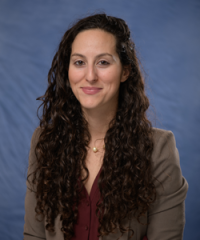Anna Torres-Cacoullos (Spanish and Portuguese) is a 2023–2024 HRI Faculty Fellow. Torres-Cacoullos’ book project, “Writing for New Literacies: Moving-Image Storytelling and Film Culture in Silver Age Spain” is a study of these experimental practices of literary-cinematographic writing, where authors converted motion pictures into a methodological tool to explore fusing literature and film.
Learn more about HRI’s Campus Fellowship Program, which supports a cohort of faculty and graduate students through a year of dedicated research and writing in a collaborative, interdisciplinary environment.
What is unique about your research on this topic?
My book argues that film fan culture of the 1910s-1920s served as a forceful impetus for the expansion of literary genres in the early 20th century in Spain. As cinema’s moving images impelled literary writers to rethink narrative expression, movie fan culture rendered urgent the emergence of radically new types of cultural authority. The production of new genres of storytelling—such as novel-films and film scripts—spoke to an expanding body of cinema-literate readers, now including women and adolescents. Adapting to a new ‘film literacy,’ as I call it, these experimental literary-cinematographic texts challenged the nature of reading and writing and advanced a new manner of intellectualized consumer reading, one that blurred the divide between high and lowbrow culture, or between the (literary) intellectual and the (filmic) consumer.
My book gives testimony to Spain’s vibrant silent film culture by providing the first study, to my knowledge, to document the general public’s remarkable interest and critical engagement with film, through a systematic consideration of Spanish popular film magazines and their readers. In addition to foregrounding writers’ general attention to an expanding body of reader-spectators, I document how women modernists also seized on the opportunity to make space for themselves and engage with experimental film writing. The new mass culture of film, thus, made possible new types of cultural authority that were no longer the prerogative of the traditional (male) critic or literary connoisseur.
What drives your interest in this research?
My book project responds to the evolving relationship that today’s readers have with print and to our contemporary digital culture in which students are increasingly equipped with multiliteracy competencies as they careen between screens and engage in multiple information streams at once. By spotlighting a unique time and place in which new genres of writing emerged in the face of new media—such as film in the early twentieth century—my book demonstrates a longer history of speculative imagination in which writers have envisioned the appearance of new cultural products that meet the challenge of telling stories in new ways and that adapt to a more diverse range of readers developing an expanding set of interpretative skills and cultural expertise. I posit that the study of film literature of the 1920s, as an early twentieth-century mass cultural form, gives us a unique opportunity to reflect on how new technology (e.g. moving images) shapes the creation of cultural meaning.
How has the fellowship seminar impacted the way you approach your research?
In light of my book’s interdisciplinarity, I have greatly benefited from the infrastructure and guidance provided by HRI’s collaborative working group. I composed my first book chapter for the fellowship, and the input from our community of dialogue has been rewarding in guiding me with preparing this chapter for both specialists and broader audiences. My consideration of the ways in which literature (broadly conceived) can richly engage with other disciplines within the humanities and arts continues to grow thanks to this fellowship!
